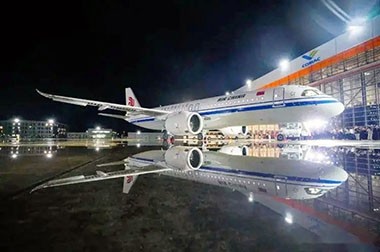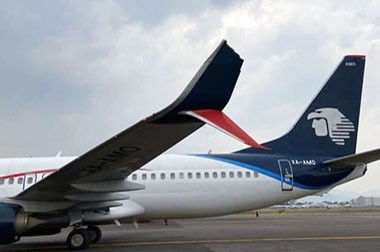What is the difference between 7075 T651 and 7075 T7351?
The difference between 7075-T651 and 7075-T7351 aluminum alloys lies in their tempering processes and the resulting mechanical properties, particularly strength, stress corrosion resistance, and fracture toughness.
Main Differences Between 7075 T651 and 7075 T7351
Strength and Corrosion Resistance: 7075-T651 has higher tensile and yield strength, making it suitable for applications requiring maximum strength. In contrast, 7075-T7351 has excellent stress corrosion cracking resistance, which is crucial for components exposed to harsh environments.
The choice between 7075-T651 and 7075-T7351 should be guided by the specific requirements of the application, balancing strength needs with the necessity for stress corrosion cracking resistance.
Manufacturing Considerations: The over-aging process in 7075-T7351 reduces the density of precipitates in the aluminum matrix, resulting in lower strength but improved stress corrosion resistance.
7075 aluminum alloy is known for its high strength-to-weight ratio and is a popular choice in aerospace, military, and high-performance applications. The difference between T651 and T7351 tempers primarily comes from their different heat treatment processes, which alter mechanical properties and suitability for specific applications.
7075 T651 and 7075 T7351 Temper Designation
7075-T651:
- T6: Solution heat-treated (heated to high temperatures to homogenize the alloy) and artificially aged (precipitation hardened at high temperatures).
- 51: Stress-relieved by stretching (1-3% permanent deformation after quenching) to eliminate residual stresses during the manufacturing process.
- Combines high strength with improved dimensional stability during machining.
7075-T7351:
- T73: Solution heat-treated, followed by a two-step over-aging process. First, aging is done at a higher temperature to coarsen precipitates, then at a lower temperature to stabilize the microstructure.
- 51: Similarly stress-relieved by stretching.
- Sacrifices some strength to enhance stress corrosion cracking resistance and fracture toughness.
7075-t7351 vs 7075-t651 Key Property Differences
| Property | 7075-T651 | 7075-T7351 |
| Stress Corrosion Resistance | Moderate (prone to cracking under tension in corrosive environments) | Excellent (resistant due to over-aging) |
| Fracture Toughness | Lower | Higher (better resistance to crack propagation) |
| Residual Stress | Reduced via stretching (suitable for precision machining) | Similarly reduced via stretching |
7075-T651 Aluminum Properties
Heat Treatment Process: Includes solution heat treatment and artificial aging. Additionally, the "51" designation indicates that the material is stress-relieved by stretching, helping to alleviate internal stresses and improve dimensional stability.
Mechanical Properties:
- Tensile Strength: Approximately 83,000 psi (572 MPa).
- Yield Strength: Approximately 73,000 psi (503 MPa).
- Fracture Elongation: Typically between 5% and 9%.
Applications: Due to its high strength, 7075-T651 is commonly used for structural components such as aircraft wing spars and fuselage frames, as well as military and high-performance sports equipment.
7075-T7351 Aluminum Properties
Heat Treatment Process: Also undergoes solution heat treatment and artificial aging. The suffix "51" indicates that it is stress-relieved by stretching. "73" indicates that the material has been over-aged, meaning it has exceeded its peak hardness to enhance stress corrosion cracking resistance.
Mechanical Properties:
- Tensile Strength: Approximately 66,000 psi (455 MPa).
- Yield Strength: Approximately 52,000 psi (359 MPa).
- Fracture Elongation: Typically between 6% and 13%.
Applications: Enhanced stress corrosion cracking resistance makes 7075-T7351 suitable for critical aerospace applications, where components are subjected to high stress and corrosive environments, such as aircraft wing bases and fuselage structures.
7075 T7351 vs 7075 T651 Applications
- 7075-T651: Optimized for maximum strength; most suitable for non-corrosive, high-load environments.
- 7075-T7351: Balances strength with excellent corrosion resistance and toughness; ideal for harsh environments.
| Alloy Condition | Description |
| 7075-T651 | 7075-T651 aluminum alloy is primarily used in critical applications requiring extremely high strength, especially in the aerospace sector. It is commonly used for aircraft wing spars, fuselage frames, and other structural components that must endure significant stress during flight. The high strength and good machinability of 7075-T651 make it an ideal material for manufacturing these aerospace structures. Despite its excellent mechanical properties, its corrosion resistance is relatively weak, so it is not suitable for use in high-corrosion environments such as marine or salt-spray environments. |
| 7075-T7351 | 7075-T7351 aluminum alloy is more suitable for applications that operate under sustained loads and require good corrosion resistance. It is commonly found in marine components, military aircraft parts, and other components exposed to humid or high-salt environments. Compared to T651, the T7351 condition offers better corrosion resistance through controlled heat treatment, making it particularly suitable for long-term use in harsh environments, such as marine or high-humidity conditions. The durability and corrosion resistance of this material make it the preferred choice in some critical applications. |
7075 T7351 vs 7075 T651 Aging Process
- T6 (T651): Single-step artificial aging maximizes strength but leaves finer precipitates, increasing susceptibility to stress corrosion.
- T73 (T7351): Over-aging coarsens precipitates, reducing internal stress and improving corrosion resistance, but strength decreases by about 15-20%.
Both alloys undergo stress-relieving (51) treatment for dimensional stability, but their aging treatments cater to different engineering priorities.




